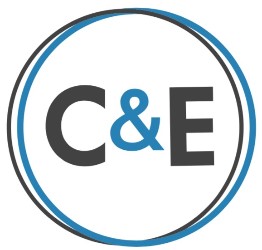Cores & Effect Tool Kit Review
The Cores & Effect Pilates Tool Kit is an aptly named resource for those wishing to improve their overall well being. Specifically I think this book is well suited to those who are recovering from injury, overtraining in a single discipline, new to movement, or suffering from chronic soft-tissue pain.
It is a pleasure to read and the author’s wit and passion are consistently present throughout the narration. In Part I the content moves efficiently and yet it effectively addresses many of the common barriers to beginning a lifestyle change. Neurobiology, motivation, habituation, obstacles, and pain are highlighted with respect to their relationship to the mind-body connection and their role in aiding or deterring a change in lifestyle. The depiction of the pain cycle is one with which many people will identify. In it lies a prevailing message of empowerment that may inspire one to break their own cycle of chronic pain. The authors are seemingly trying to gift to you a way to take ownership of your body, and how it feels and functions, in order to achieve your goals. The text reads, “ with regard to pain – basic skills of connected awareness are always in order”. With that message in mind, Part II leads to understanding how.
Part II begins with an introduction to the exercises, which the reader is invited to review regularly. The concepts described include breath, concentration, precision, centering, control, and flow. Though it is only four pages in length, understanding and review of these concepts is key to meeting success in the later described exercises.
There are a total of sixty-seven exercises described in the book. (Sixty seven!) Each includes a description of the exercise’s indication and also cautions when it may not be appropriate. Cues for perfecting the motion and common errors are incorporated. Descriptions of how the movement should feel are also most helpful. There are multiple pictures that show the progression of the movement. In addition, there are QR codes linked to videos so that you may observe the desired motion. Although there is no replacement for having a trained eye watching and cueing your movement, this is the next best option.
I found the sheer number of exercises described a bit daunting. However, after some review it became clear that not all exercises were appropriate for each person at each time. It really is a large menu from which you may choose the movements that best suit your needs. I particularly liked the list of recommended sequences (page 115) whereby one may choose a grouping of exercises based on time allowance or area of focus.
In my opinion, the value in this book lies in its detailed approach with which one has the power to self-implement. I think people often meet with disappointment as they seek health care advice on how to reach their goals regarding musculoskeletal pain. I also hear frustration on the part of health care professionals as they try to communicate the message of using movement and exercise as a treatment for musculoskeletal pain, feeling that patients want quick results and a pharmaceutical or surgical remedy. Perhaps the disconnect comes form the dichotomy of expectations. Healing in this manner requires time, perseverance, and as the Tool Kit recommends – a movement practice. Conceivably the disconnect results from inadequate communication. The message to move purposefully and differently is difficult to put into place without significant guidance. Although there are health care professionals who can provide this guidance it is rare to have access to a comprehensive overview of why and how to move differently. Time and cost are significant barriers for most individuals, thus treatment is often abandoned before meaningful change can take place. In my own resolution to better communicate how movement can help relieve musculoskeletal pain I am unabashedly going to make use of the quote “ the measure of success is going to be in how we feel.” The Cores and Effects Tool Kit is an excellent resource with which to make a change under one’s own governance.
